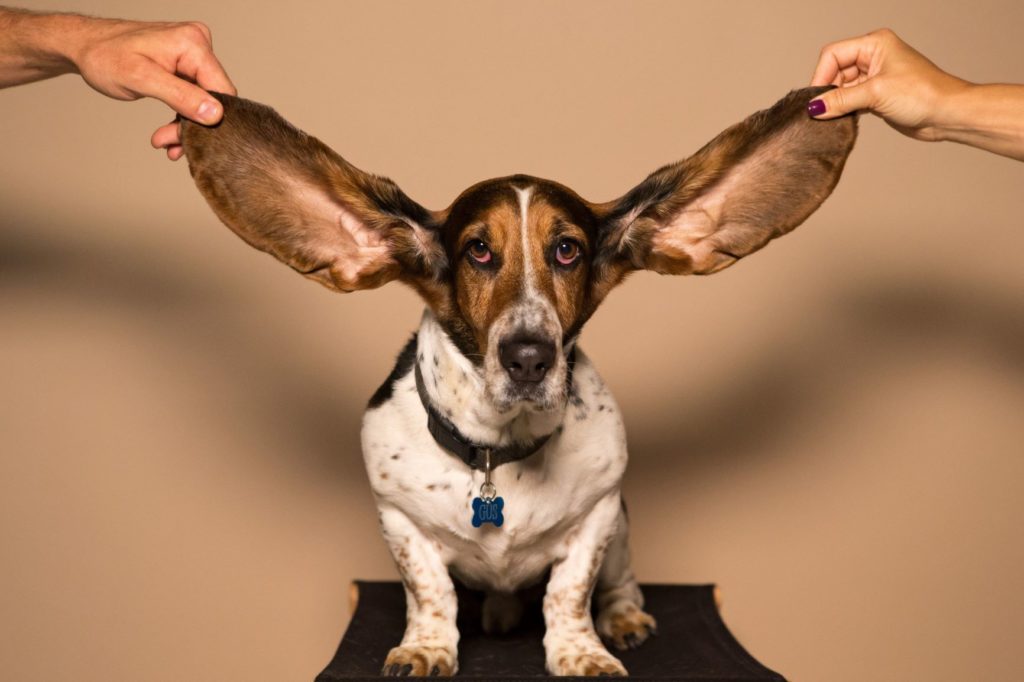Speaking Environment Part 3: Best Mic for Public Speaking

This post is part of a four-part series that provides tips and strategies on how to best approach your speaking environment – from the room setup to your timing, as well as other considerations – so that your presentation is heard and experienced exactly as you intended.
What’s the best mic for your presentation? It depends.
If your voice carries well and you’re speaking in a small room to an audience of no more than 25-30 people or so, you can probably do without a microphone. Using a mic in such a setting can occasionally make you more difficult to hear, as some sound systems are low tech and echoes can distort the sound.
But in larger rooms with larger audiences, microphones become essential to your success. Accept a microphone in those settings even if your voice projects well, as you’ll want to avoid straining your vocal cords or being perceived as yelling. You want your natural voice to be amplified – not intensified through a shout. Plus, refusing a microphone could deny you the ability to use a quieter volume at moments to match the material you’re sharing.
Some facilities have better sound systems than others, so one of the first things you should do before any public speaking is to check the audio. Test your mic by walking around the entire room and seeing if it produces any feedback. Enlist the aid of a volunteer to sit in various parts of the room to make sure you’re audible and the volume is set to a comfortable level.
Picking the Best Mic for Your Presentation
There are several types of mics you can use while public speaking, depending on the room setup, format, and audience size. If you are presenting virtually, you could rely on the mic in your computer, but if think you’ll be doing a fair share of virtual talks, you may want to purchase an external mic, such as a lavalier or freestanding mic, or a headset, particularly one that is not too noticeable on camera.
Lavalier (aka lapel, clip-on, collar) mic
 Perhaps the most used option, a “lav” is a small wired or wireless mic that keeps you mobile and your hands-free. Lavs should be positioned in the center of the chest, which helps to reduce (but not eliminate) the risk of the audio fading whenever you turn your head to, for instance, look at the screen behind you.
Perhaps the most used option, a “lav” is a small wired or wireless mic that keeps you mobile and your hands-free. Lavs should be positioned in the center of the chest, which helps to reduce (but not eliminate) the risk of the audio fading whenever you turn your head to, for instance, look at the screen behind you.
Wearing a lavalier while public speaking requires two things: a place to clip the battery pack and a place to clip the mic. Clip the battery pack to a waistband or belt, either on your side or your back. You can also place the pack inside a suit jacket’s inner pocket. If you plan to wear a dress, think about where you can attach the pack (some on-air talent use thigh belts).
As for the mic, clasp it on your jacket’s lapel, the gap between buttons on a dress shirt, a tie, or the neckline. If you’re wearing a dress, a jewel or scoop neck can be more challenging than a suit and button-down blouse. If wired, run the wire up beneath your shirt so only the mic is visible, and tape the wire down beneath your tie or inside a jacket to hide it. Finally, consider your accessories. Given the mic’s ability to pick up sound from all directions, dangling jewelry could hit the mic, and your scarf could create a rustling noise.
Headset (or “earset”)
 This head-worn microphone features either a single or double headpiece with an attached small mic that rests at the side of your mouth. It moves as you do, so the amplification is always with you. Some headset mics are relatively unobtrusive, which is why they’re commonly used during TED Talks and other high-profile public speaking events.
This head-worn microphone features either a single or double headpiece with an attached small mic that rests at the side of your mouth. It moves as you do, so the amplification is always with you. Some headset mics are relatively unobtrusive, which is why they’re commonly used during TED Talks and other high-profile public speaking events.
Like the lav, your wardrobe needs to accommodate a battery pack and, if wired, obscure any dangling cords. Position the headset mic several fingers distance from your mouth to avoid a heavy breathing effect.
Handheld microphone
Typically, handheld mics (see photo at top of post) provide the best sound quality – but as the name implies, they are not hands-free. Also, unless you are using a wireless one, you may have to grapple with a cord if you plan to be on the move. The head of the mic should be from 2 to 4 inches away from your mouth and held more horizontally than vertically. If your breathing is audible or certain sounds are causing pops or clicks, you can adjust the mic up or down or move it farther away from your face.
 Lectern microphone
Lectern microphone
These microphones are the least flexible, as they are mounted to a lectern and can be only partially adjusted.
Since the mic is stationary, your audio might fade out as you turn to the side. That could be problematic if your speech is being recorded, streamed, or broadcast. Adjust the height in advance of your remarks.
Beyond the Best Mic
In addition to picking the best mic for your presentation, there are many other pieces of equipment that go into effective public speaking, some of which you might bring yourself. They may even help you if things go wrong. Here’s a quick checklist:
- Laptop and cord – If you are using your laptop, make sure you know what types of cords you’ll need to connect it to the on-site projector, monitor, or screen. If necessary, bring an adapter to marry your laptop’s available inputs to the system’s available outputs. Also, remember to bring your laptop power cord.
- Power strip and tape – To avoid a clutter of wires, bring a power strip so only one cord must reach a power source. Bring duct tape to cover unsightly cords, prevent tripping hazards, and hide the wires of clip-on mics.
- Slide clicker – A handheld wireless slide remote clicker allows you to move around the room without returning to “base” to advance the slides from your laptop.
- Batteries – In case your mic or television remote control goes dead, have an extra set of AA, AAA, and 9-volt batteries on hand.
- Wi-Fi access – If you or your audience will need Wi-Fi, get the network and password information in advance.
Other posts in this series:
Part One: The Room, Setup, and Other Considerations
 Lectern microphone
Lectern microphone

